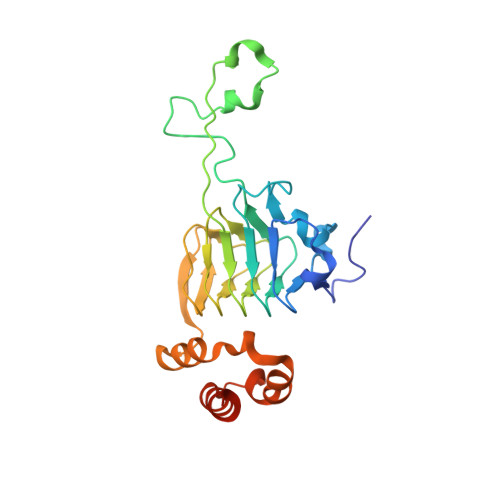Chloramphenicol Binding Sites of Acinetobacter baumannii Chloramphenicol Acetyltransferase CatB8.
Liao, J., Qi, Q., Kuang, L., Zhou, Y., Xiao, Q., Liu, T., Wang, X., Guo, L., Jiang, Y.(2024) ACS Infect Dis 10: 870-878
- PubMed: 38311919
- DOI: https://doi.org/10.1021/acsinfecdis.3c00359
- Primary Citation of Related Structures:
8J40 - PubMed Abstract:
Acinetobacter baumannii is a multidrug-resistant pathogen that has become one of the most challenging pathogens in global healthcare. Several antibiotic-resistant genes, including catB8 , have been identified in the A. baumannii genome. CatB8 protein, one of the chloramphenicol acetyltransferases (Cats), is encoded by the catB8 gene. Cats can convert chloramphenicol (chl) to 3-acetyl-chl, leading to bacterial resistance to chl. Here, we present the high-resolution cocrystal structure of CatB8 with chl. The structure that we resolved showed that each monomer of CatB8 binds to four chl molecules, while its homologous protein only binds to one chl molecule. One of the newly discovered chl binding site overlaps with the site of another substrate, acetyl-CoA. Through structure-based biochemical analyses, we identified key residues for chl recruiting and acetylation of chl in CatB8. Our work is of significant importance for understanding the drug resistance of A. baumannii and the effectiveness of antibiotic treatment.
Organizational Affiliation:
Department of Laboratory Medicine, West China Second University Hospital, Sichuan University, Chengdu 610041, Sichuan, China.

















